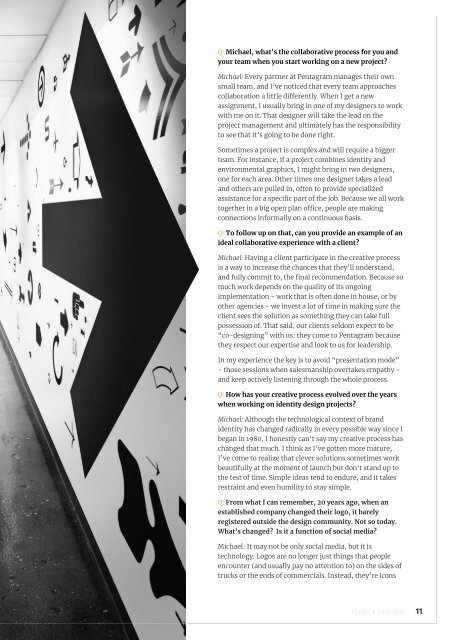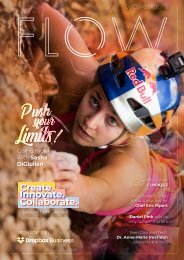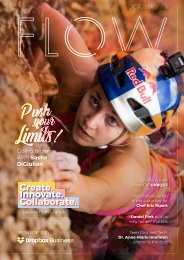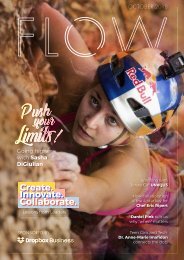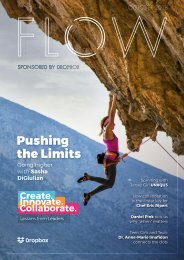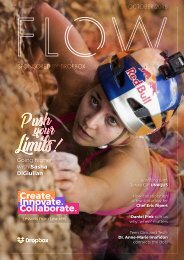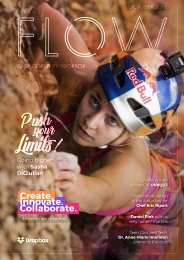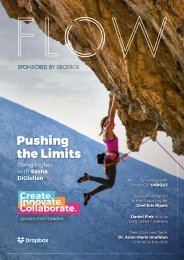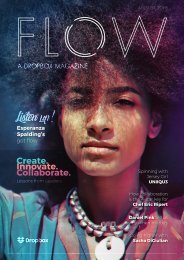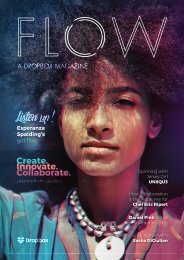wrc-db-prototype-02
Create successful ePaper yourself
Turn your PDF publications into a flip-book with our unique Google optimized e-Paper software.
Q: Michael, what's the collaborative process for you and<br />
your team when you start working on a new project?<br />
Michael: Every partner at Pentagram manages their own<br />
small team, and I’ve noticed that every team approaches<br />
collaboration a little differently. When I get a new<br />
assignment, I usually bring in one of my designers to work<br />
with me on it. That designer will take the lead on the<br />
project management and ultimately has the responsibility<br />
to see that it’s going to be done right.<br />
Sometimes a project is complex and will require a bigger<br />
team. For instance, if a project combines identity and<br />
environmental graphics, I might bring in two designers,<br />
one for each area. Other times one designer takes a lead<br />
and others are pulled in, often to provide specialized<br />
assistance for a specific part of the job. Because we all work<br />
together in a big open plan office, people are making<br />
connections informally on a continuous basis.<br />
Q: To follow up on that, can you provide an example of an<br />
ideal collaborative experience with a client?<br />
Michael: Having a client participate in the creative process<br />
is a way to increase the chances that they’ll understand,<br />
and fully commit to, the final recommendation. Because so<br />
much work depends on the quality of its ongoing<br />
implementation - work that is often done in house, or by<br />
other agencies - we invest a lot of time in making sure the<br />
client sees the solution as something they can take full<br />
possession of. That said, our clients seldom expect to be<br />
“co-designing” with us: they come to Pentagram because<br />
they respect our expertise and look to us for leadership.<br />
In my experience the key is to avoid “presentation mode”<br />
- those sessions when salesmanship overtakes empathy -<br />
and keep actively listening through the whole process.<br />
Q: How has your creative process evolved over the years<br />
when working on identity design projects?<br />
Michael: Although the technological context of brand<br />
identity has changed radically in every possible way since I<br />
began in 1980, I honestly can’t say my creative process has<br />
changed that much. I think as I’ve gotten more mature,<br />
I’ve come to realize that clever solutions sometimes work<br />
beautifully at the moment of launch but don't stand up to<br />
the test of time. Simple ideas tend to endure, and it takes<br />
restraint and even humility to stay simple.<br />
Q: From what I can remember, 20 years ago, when an<br />
established company changed their logo, it barely<br />
registered outside the design community. Not so today.<br />
What's changed? Is it a function of social media?<br />
Michael: It may not be only social media, but it is<br />
technology. Logos are no longer just things that people<br />
encounter (and usually pay no attention to) on the sides of<br />
trucks or the ends of commercials. Instead, they’re icons<br />
<br />
~<br />
<br />
11


